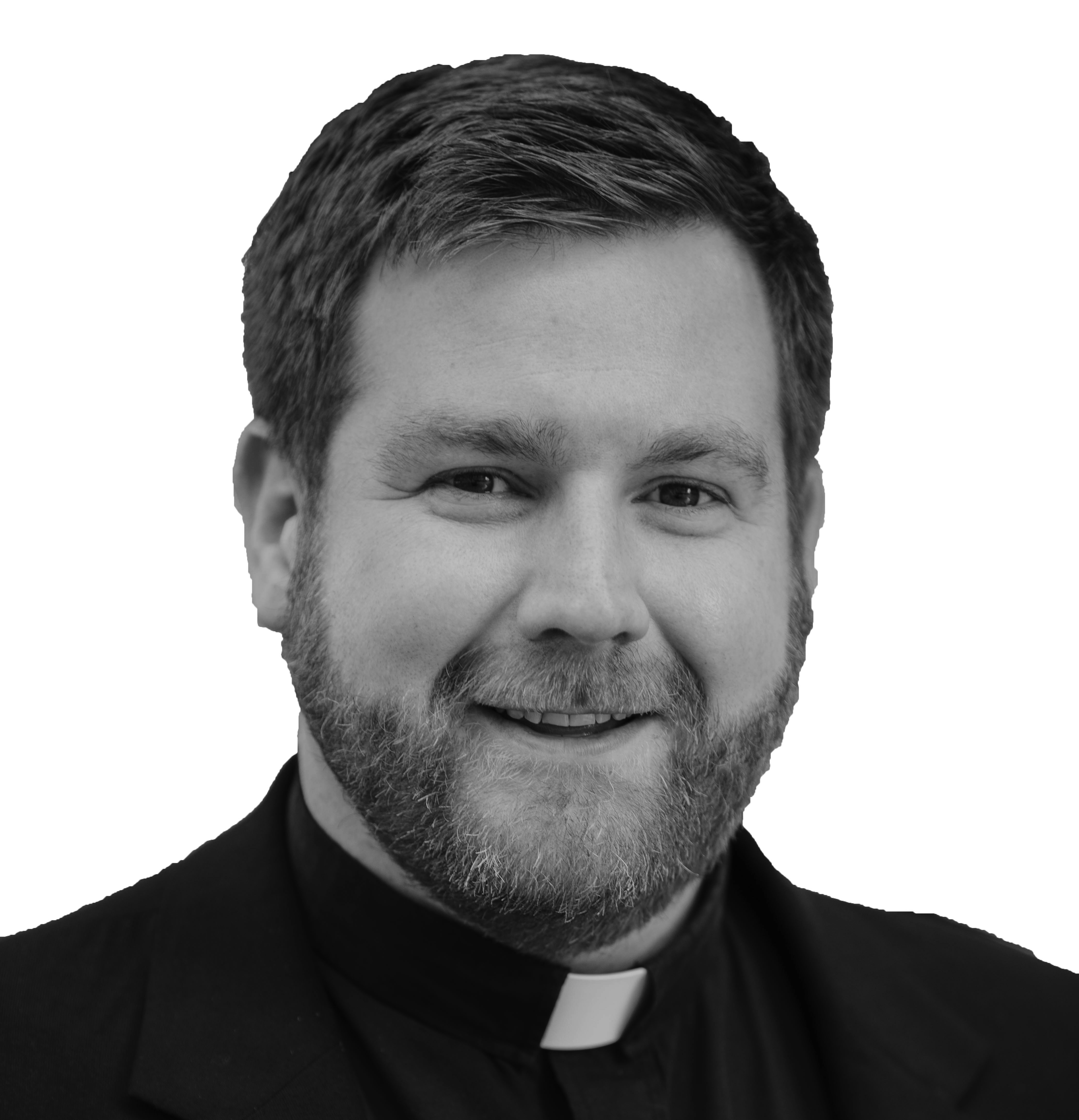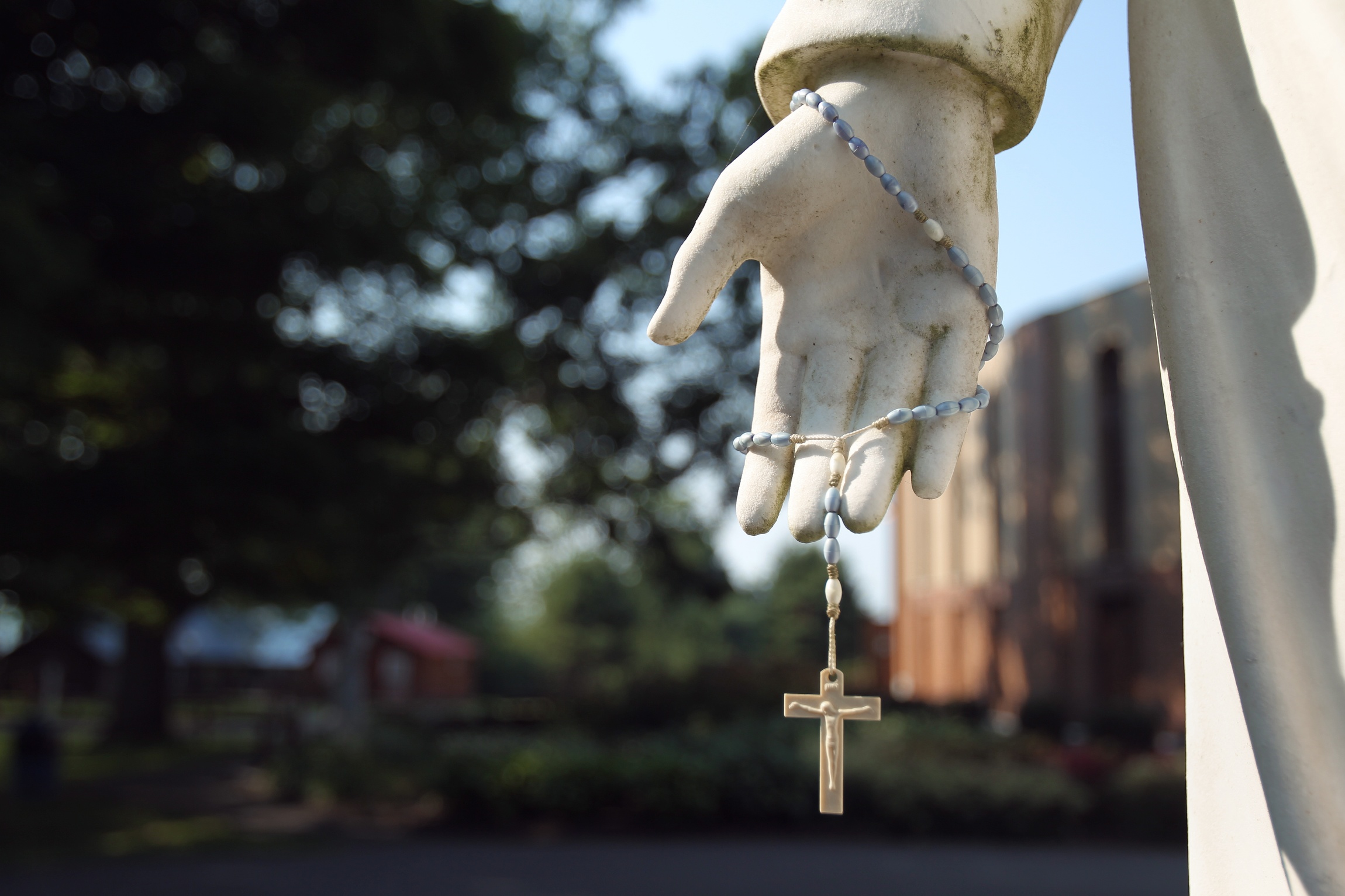I was in the first semester of my freshman year in college when Pope St. John Paul II released his apostolic letter on the rosary, titled Rosarium Virginis Mariae.
I attended a Catholic college, so while this was certainly not a topic of frequent discussion, many people commented about how extraordinary it was. It would be some time before I actually read the encyclical, which gives a beautiful apologia for the rosary as a salutary prayer for contemplation on the life of Christ in union with his Mother.
He writes about the rotation of the sets of mysteries throughout the week: Monday and Saturday for the joyful mysteries; Tuesday and Friday for the sorrowful; Wednesday and Sunday for the glorious; and Thursday for the newest addition, the luminous mysteries (or the mysteries of light). This allows us to move through all of the mysteries throughout the week, deepening our understanding of God’s plan for salvation through Jesus Christ. But I would propose that the luminous mysteries have a particularly “summer” character, which makes them most suited for prayer during these months.
The luminous mysteries bring us from the beginning of Jesus’ public life (where the joyful mysteries end) until the beginning of his Passion (where the sorrowful mysteries begin). They include:
- the baptism of Jesus in the Jordan River
- Jesus’ self-manifestation at the wedding at Cana
- the proclamation of the kingdom along with the call to conversion
- The Transfiguration of Jesus
- His institution of the Eucharist as the sacramental expression of the Paschal Mystery
These five moments in Jesus’ life are links to carry our prayer and meditation through his public ministry to the beginning of his Passion.
The baptism in the Jordan
The baptism in the Jordan (Mt. 3:13-17) is one of the few moments of Jesus’ life (outside of the Passion) recounted in all four Gospels. We know Jesus is conceived and born without sin and lived a perfect life. Therefore, his baptism is not to cleanse him from sin, but rather serves two purposes. First, Jesus’ action gives the water the effect that baptism will offer to us; the power to wash us clean from sin. When Jesus touches a leper, rather than himself contracting the disease, he heals. Likewise, when he is washed in the water, his divine purity makes the water teem with the power to offer the life-giving power of baptism. Second, this act occasions the manifestation of the Trinity as the voice of the Father and the image of the Spirit (a dove) appear at this moment (cf. Mk. 1:9-11).
Every swim or cool drink of water you take this summer is a reminder of God’s ability to infuse the ordinary with extraordinary power for those who have faith in him.
The wedding feast at Cana
The wedding feast at Cana (cf. Jn. 2:1-12) is much more than our Lord bailing out newlyweds from a potentially embarrassing situation. It is a manifestation of Jesus’ power, especially for the downtrodden. This miracle whereby far greater wine is made from water demonstrates the overabundance of God’s love, as he makes some 180 gallons of the best wine possible.
For each sunset you witness, each vacation you experience, each dinner and conversation with friends and family that lingers into the twilight, there is something far greater that Christ has in store for you and me. The good wine of this world will run out, but Christ wants to give us new, life-giving wine, which we can never drink unless we come to Jesus in our need and “do whatever he tells us,” as the Blessed Mother commands.
The proclamation of the kingdom
The proclamation of the kingdom is found throughout the Gospels. It is not one event, but rather the teachings and miracles of Jesus that astonish the crowds, give hope to the sinful, and harden the hearts of the self-righteous. This proclamation includes the call to conversion. We cannot be spectators to what Christ offers. It demands a decision. Once we have heard the good news, we cannot return to our old lives. We must choose to follow Christ or close our hearts to him.
The longer days of summer and the rest and relaxation of vacation present us with opportunities to ponder life’s more important questions. We are made not simply to amass the most toys, accolades and accomplishments — or even the most friends and family. Summer allows us to take a break from our fast-paced world and open our ears and hearts to the call of Christ to choose him above all.
The Transfiguration
The fourth luminous mystery is the Transfiguration. Here, Jesus brings his inner circle of apostles (Peter, James and John) up Mount Tabor, and his divinity is gloriously revealed to them in an unmistakable manner. He converses with representatives of God’s work in the Old Testament: the great law-giver Moses and the great prophet represented by Elijah. We hear Jesus is transformed: “His face shone like the sun and his clothes became white as light” (cf. Mt. 17:1-9). The Transfiguration demonstrates both Jesus’ continuity with the work of God in the Old Testament and the reality of his divinity; he is no ordinary human person. He is the Father’s “only Son our Lord, conceived by the Holy Spirit and born of the Virgin Mary,” as we pray in the Apostles’ Creed.
To experience this revelation, the apostles needed to be led “up a high mountain by themselves.” God’s revelation does not come cheap. Divine intimacy with our Lord costs us. It requires the hard work of climbing the mountain with him, often by ourselves. Summer can provide us with quiet moments to be alone with God. Silence might be the most intimidating mountain for us. There are infinite distractions that can fill every waking moment of our lives. Jesus invites us into this hard work of climbing the mountain of intimacy with him, with confidence that it is worth the effort.
The institution of the Eucharist
The institution of the Eucharist is the fifth and final mystery of light. The pinnacle of Jesus’ public ministry is his Passion. When the three apostles wanted to remain on the mountain after the Transfiguration, Christ reminded them that his work must continue. He is destined to accomplish the will of his Father and offer his life for all mankind. At the Last Supper, Jesus takes the bread and wine of the Passover meal and speaks new meaning into them: “Take and eat, this is my body … this is my blood of the covenant” (cf. Mt. 26:26-29). Therefore, this is no longer bread and wine but rather truly and unquestionably the body and blood of Jesus. What he speaks at the Last Supper, Jesus lives out on Good Friday. He gives up his body and allows his blood to be poured out for our salvation. The Eucharist is the offering of Jesus for you and me.
These months of pandemic and quarantine have presented untold challenges for many people. For the safety of our parishioners and for the public good, churches were closed and it was not possible for most of us to receive the Holy Eucharist. As churches have reopened, we are invited to reawaken our desire this summer for the tremendous gift Jesus offers us in the Eucharist.
Pope St. John Paul II gave the Church this fourth set of mysteries upon which to meditate. For the rest of the summer, let’s regularly pray and meditate on the luminous mysteries. After all, the increased sunlight we have in Michigan during these days can be easy reminder of the much more awesome light God offers in these mysteries of the life of Christ.
Fr. Stephen Pullis is director of the Archdiocese of Detroit’s Department of Evangelization and Missionary Discipleship.










